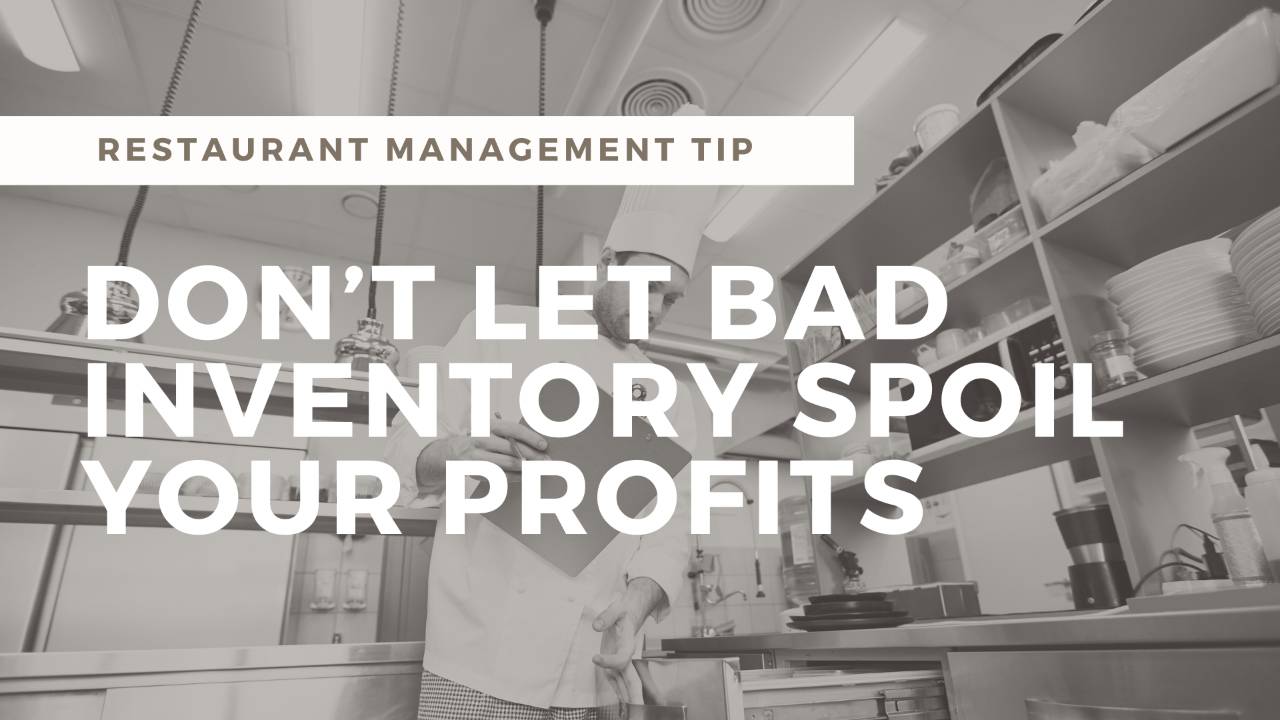How to Stop Spoilage from Killing Your Restaurant Profits

Struggling with high restaurant food costs because of product spoilage? You’re not alone. But what if I told you that better inventory practices can save you thousands of dollars and significantly improve your restaurant’s efficiency? Spoilage doesn’t have to be a profit killer. I want to teach you how to stop spoilage from killing your restaurant profits.
One of the biggest profit killers in your restaurant is spoilage. Food waste doesn’t just hurt your finances — it’s also a sign that critical systems need fine-tuning. Here are five steps that will save your bottom line and give you more control over your operations.
Step 1: Get organized
The first step to reducing spoilage is to organize your storage areas. This means:
- Labeling everything clearly.
- Rotating stock using the FIFO method (First In, First Out).
- Ensuring proper shelving keeps food off the floor.
A clean, organized walk-in doesn’t just reduce forgotten food; it also prevents contamination and discourages pests. Make it easy for your team to know where everything belongs, and don’t forget to clean those shelves regularly!
Step 2: Use a recipe costing card
Your recipe costing card isn’t just for pricing your menu—it’s a powerful tool for managing inventory. By detailing exactly how much of each ingredient goes into every dish, you can maintain tighter controls over your stock.
Take it a step further by integrating recipe cards into your ordering process. When you know exactly how much of each ingredient you’ll use over a week or month, you can order with confidence and reduce over-purchasing—a major contributor to spoilage.
Step 3: Implement weekly inventory counts
Regular inventory counts are essential, and I recommend doing them weekly. This frequency helps you spot trends without being overly burdensome.
During these counts, assign a team member to look for items nearing their expiration dates. Keep a log of these items and plan specials or promotions to use them up quickly. Pair this data with sales trends to refine your purchasing decisions, aligning them more closely with actual usage.
Step 4: Train your team
Your team plays a huge role in reducing spoilage. Train them to:
- Handle ingredients properly.
- Store food at the correct temperatures.
- Keep an eye out for products nearing their expiration.
Go beyond the basics by hosting periodic refresher courses or quizzes to reinforce proper techniques. Empower your team to take ownership of inventory by assigning clear responsibilities and rewarding those who actively reduce waste.
Step 5: Monitor key metrics
Tracking key metrics like inventory turns and food cost percentage is critical, but don’t stop there. Dive deeper into specific metrics, such as:
- Waste percentages by category (produce, proteins, etc.).
- Over-ordering trends by supplier.
Use software to automate data collection and visualization. This makes it easier to spot potential issues before they spiral out of control. Regularly review these metrics with your management team and include them in your weekly meetings to keep everyone aligned.
Bonus tip: Build a culture of awareness
Reducing spoilage isn’t just about systems and processes — it’s about creating a culture where every team member understands the impact of waste. Share the financial implications of spoilage with your team so they can see how it affects not only the business but also their job security and growth opportunities.
When everyone is invested in reducing waste, small changes can lead to significant results.
Turn restaurant waste into savings
Reducing spoilage isn’t just about saving money—it’s about running a more efficient and profitable restaurant. By organizing your storage, using recipe costing cards, taking regular inventories, training your team, tracking key metrics and building a culture of awareness, you’ll transform waste into savings.
These steps protect your bottom line, empower your team and strengthen your operations.
Be sure to visit my YouTube channel for more helpful restaurant management video tips.




